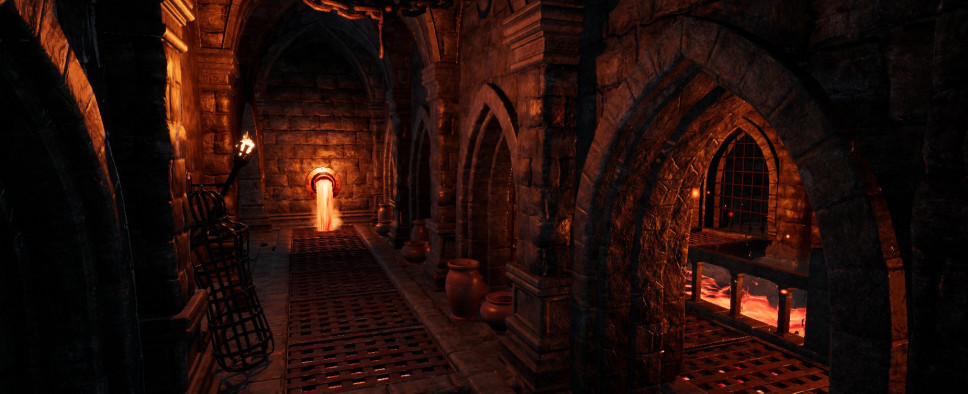Monomyth Update - Current Progress
-
Category: News ArchiveHits: 1134

The latest Kickstarter update for Rat Tower Software's dungeon-crawling RPG Monomyth talks about how the game now utilizes Unreal Engine's skeletons, and how that in turn improves and simplifies the process of populating the game with NPCs and making them look good. We also get a quick update on level design and even a mention of an upcoming backer beta.
Here are the text parts:
Hi, dungeon-crawling fans!
Another month has passed and it is time for yet another update on the project! A lot has happened in terms of gameplay implementation, characters, and level design. So let's get to it!
Current Progress
NPCs were among the most important things I tried to improve during March. The essential motivation here was to iron out some issues with their controlling logic and how they interacted with one another depending on their individual factions. All of this work was based on a perception system I implemented during the code refactoring I mentioned in previous updates. The perception system itself remained largely untouched during these improvements, which gives me confidence that, for now, it is in a good state. As a result of the work, NPCs can now actively fight each other without any big hiccups in terms of background logic. They properly recognize enemies (both player and non-player), orderly cycle back into their peace state after combat, and correctly perform subsequent actions. Especially the latter has been a constant source of headaches in the old codebase, which had an ad-hoc structure that was replaced by a more robust state machine architecture (see December update).
There have also been multiple improvements with regard to character animations. As you may remember from one of the last updates, every character requires a "skeleton" to be animated. Thanks to the standard UE4 skeleton, which is now a core element of Monomyth's humanoids, various animations could be standardized across many different characters. As a result, NPCs now show behavior that makes them appear more realistic. For example, characters are turning their heads, following the (sighted) player, sheath their weapons whenever they are not in combat, and sometimes carry torches. These torches are not just for decoration but have an effect on player stealth.
Expanding on the modular character system, I ported the old wastelander model from the Kickstarter demo to the UE4 skeleton. Those guys can now share their armor with other humanoid characters.
All of these improvements come in handy for the player character as well. That character runs on a subclass of the refactored character codebase and the standard UE4 skeleton. So everything that works for the NPCs, also works for the player. This immensely simplifies the implementation of various features. As you may remember, during last year's campaign, we did not quite make the "Expanded Immersive Simulation" stretch goal. I still try to get as many of the features from that stretch goal into the final game regardless. One interesting feature was the visualization of the player character model (i.e., character legs), however, on the old codebase (or more specifically, with the old player skeleton), this would have meant a lot of extra work. Essentially, every piece of armor would have had to fit the player's skeleton. With the modular character system, the player - much like the wastelanders - can simply "put on" any NPC armor.
With that, the visualization of the player character becomes significantly easier on a technical level. This feature, however, is still a bit experimental, and its full implementation will depend on how strongly NPC and player equipment design will overlap during the character design work of the next few months. There are still a few non-humanoid characters that require work and, naturally, their and the player's equipment design are largely mutually exclusive.
Apart from my work on characters, I have also spent quite a bit of time on level design. A major area of the game is very close to completion. For the first beta phase, I would like to finalize at least three major areas. Therefore, the level design will probably take up most of next month's work schedule.
I have also written a lot of dialogue, which I will integrate into the game within the next few weeks. Most narrative assets will naturally be used in the game's main settlement. I hope to finalize a good portion of these assets for the first beta phase as well.
Talking of which, I can't quite promise it yet, but I hope that next time I will have a beta date for you! Everyone that backed the game at the "Seventh Oath Cleric" level or higher will receive an invite via mail. By that time I will also contact you about your creative rewards (item names, quests, etc).
That's all for the moment. More updates to come! Until then!
Best wishes,
Michael

